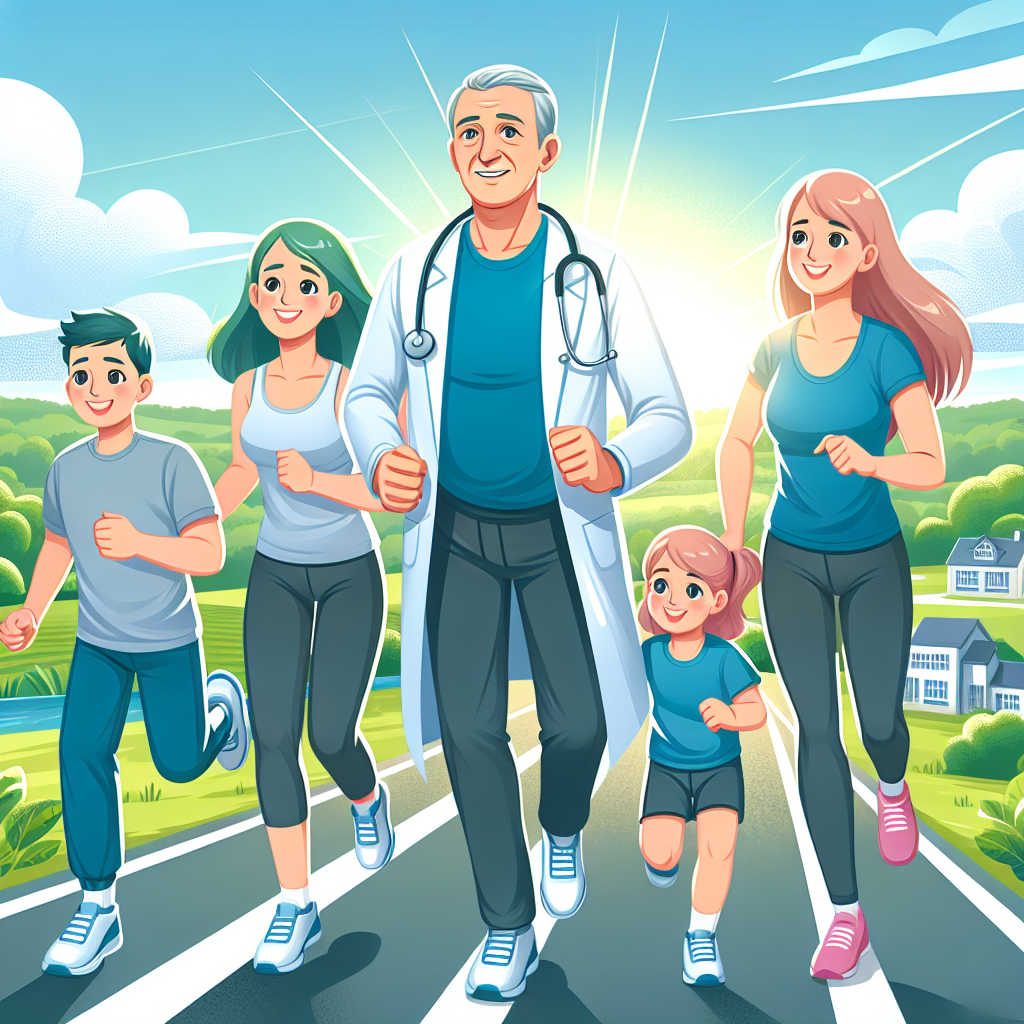A recent study by the Health Foundation found that more and more workers in the UK are having health problems that make it difficult for them to do their jobs. The study showed that 12% of people who are currently employed, which is about 3.7 million people, have a condition that limits their ability to work. This is an increase from 8.5% ten years ago, which means that 1.4 million more people are affected. It’s important to note that young workers, between the ages of 16 and 34, are experiencing health issues at similar levels to middle-aged people ten years ago.
The most common causes of these work-limiting conditions are chronic illnesses like heart disease, mental health problems, and joint and bone issues. The Health Foundation, a charity that focuses on improving health and care, is worried about how big of a problem this is and has put together a group of experts to look into it further. They say that while a lot of attention has been given to people who can’t work because of poor health, this study shows that there are a lot of people with work-limiting illnesses who are still employed. The think tank says that the government and employers need to do more to support these workers and help them get healthier.
The study also found that women and people who live in poor areas are more likely to have work-limiting conditions. On average, they earn 15% less than people who are healthier. Dr. Jennifer Dixon, the CEO of the Health Foundation, says that poor health has a big impact on individuals, families, and the whole country. It not only makes people less productive and hurts the economy, but it also puts a lot of strain on public services and employers.
The exact reasons for the increase in work-limiting conditions are not clear, but things like better reporting of mental health problems, longer waits for treatment, and the effects of the pandemic are likely factors. The study used data from the Labour Force Survey, which has recently stopped because fewer people are taking part. However, the Health Foundation believes that the data they used is still accurate. The Department of Work and Pensions has announced a plan to help people with health problems find and keep jobs, which includes more support for employment and health.
Original news source: More illness among young affecting work ability (BBC)
Listen
Slow
Normal
Fast
Group or Classroom Activities
Warm-up Activities:
– News Summary
Instructions: Students will work individually to summarize the article in their own words, focusing on the main points about the increase in UK workers with health problems limiting their ability to work. They should aim to do this in under 100 words, which helps them practice conciseness and the use of relevant vocabulary.
– Opinion Poll
Instructions: Have the class stand in a line in the middle of the room. Read out statements related to the article, such as “Employers should provide more health support to their workers” or “Health issues among young workers are a serious concern for the economy.” Students step to one side of the room if they agree or the other if they disagree. After each statement, select a few students to explain their position to practice their speaking and reasoning skills.
– Keyword Hangman
Instructions: Play a game of hangman using key terms from the article such as “chronic illness,” “mental health,” “productivity,” and “employment support.” This activity helps to reinforce vocabulary specific to the topic of health and work.
– Future Predictions
Instructions: Students work in pairs to discuss and predict the future implications of the study’s findings. They can consider questions such as “How might this trend affect the future workforce?” or “What changes might we see in workplace policies?” Encourage them to use modal verbs of possibility and certainty (e.g., may, might, will, must, etc.) to express their predictions, practicing future tense and modals.
– Think-Pair-Share
Instructions: Give each student a few minutes to think about how the increase in work-limiting health conditions might impact different stakeholders, such as employees, employers, the healthcare system, and the economy. They then pair up to share their thoughts and compile a list of impacts. Lastly, pairs will share their findings with the class, which promotes active engagement and shared learning.
Comprehension Questions:
1. What percentage of currently employed people in the UK have a condition that limits their ability to work according to the recent study?
2. How many more people are affected by work-limiting conditions now compared to ten years ago?
3. Which age group of workers is experiencing health issues at similar levels to middle-aged people from a decade ago?
4. What are the most common causes of work-limiting conditions mentioned in the article?
5. Why is the Health Foundation concerned about the issue of workers with health problems?
6. What is the average income difference between people with work-limiting conditions and healthier individuals?
7. What are some potential reasons for the increase in work-limiting conditions?
8. What plan has the Department of Work and Pensions announced to address the issue of people with health problems in the workforce?
Go to answers ⇩
Listen and Fill in the Gaps:
A recent (1)______ by the Health Foundation found that more and more workers in the UK are having health problems that make it difficult for them to do their jobs. The study showed that 12% of (2)______ who are currently (3)______, which is about 3.7 million people, have a condition that limits their ability to work. This is an (4)______ from 8.5% ten years ago, which means that 1.4 million more people are affected. It’s important to note that young workers, between the ages of 16 and 34, are experiencing health issues at similar levels to middle-aged people ten years ago.
The most common causes of these work-limiting conditions are chronic illnesses like heart disease, mental health (5)______s, and (6)______ and bone issues. The Health Foundation, a charity that focuses on (7)______ health and care, is worried about how big of a problem this is and has put together a group of experts to look into it further. They say that while a lot of (8)______ has been given to people who can’t work because of poor health, this study shows that there are a lot of people with work-limiting illnesses who are still employed. The think tank says that the government and employers need to do more to (9)______ these workers and help them get healthier.
The study also found that women and people who live in poor (10)______ are more likely to have work-limiting conditions. On average, they earn 15% less than people who are healthier. Dr. (11)______ Dixon, the CEO of the Health Foundation, says that poor health has a big impact on individuals, families, and the whole country. It not only makes people less productive and (12)______ the economy, but it also puts a lot of strain on public services and employers.
The exact reasons for the increase in work-limiting conditions are not clear, but things like (13)______ reporting of mental health problems, longer waits for treatment, and the effects of the pandemic are likely factors. The study used data from the (14)______ Force Survey, which has recently stopped because fewer people are taking part. However, the Health Foundation (15)______ that the data they used is still accurate. The Department of Work and Pensions has announced a plan to help people with health problems find and keep jobs, which (16)______ more support for employment and health.
Go to answers ⇩
Discussion Questions:
Students can ask a partner these questions, or discuss them as a group.
1. What is a work-limiting condition? Can you think of an example?
2. Have you or someone you know ever had a health problem that made it hard to work or go to school? What was it like?
3. Why do you think young people are having health issues that used to be more common in older people?
4. How would you feel if you couldn’t do your job as well because of a health issue?
5. Do you think mental health is as important as physical health when it comes to doing a job? Why or why not?
6. What kind of support do you think employers should give to workers with health problems?
7. Why do you think women and people from poorer areas might have more health issues that limit their work?
8. Do you believe that having less money can affect your health? Can you explain why?
9. How do you think a person’s health problems can affect their family?
10. What impact do you think health problems in the workforce have on a country’s economy?
11. Why do you think there’s been an increase in people reporting mental health issues?
12. What do you think could be done to reduce the wait times for medical treatment?
13. How has the pandemic changed the way you think about health and work?
14. Do you think the government should be responsible for helping people with health problems stay in their jobs? Why or why not?
15. What kind of changes would you suggest to help people with health issues be more productive at work?
Individual Activities
Vocabulary Meanings:
Match each word to its meaning.
Words:
1. workers
2. health problems
3. chronic illnesses
4. joint and bone issues
5. poor areas
6. work-limiting conditions
7. mental health problems
8. support
Meanings:
(a) Medical conditions that affect the body
(b) Problems with bones and connections in the body
(c) Places where people don’t have a lot of money
(d) Issues with the mind, like anxiety or depression
(e) Conditions that make it hard to do a job
(f) Help and assistance for people in need
(g) People who have jobs
(h) Long-term diseases like heart disease
Go to answers ⇩
Multiple Choice Questions:
1. According to the study by the Health Foundation, what percentage of people in the UK currently employed have a condition that limits their ability to work?
(a) 8.5%
(b) 3.7 million
(c) 1.4 million
(d) 12%
2. Which age group is experiencing health issues at similar levels to middle-aged people ten years ago?
(a) Elderly workers above 60
(b) Young workers between 16 and 34
(c) Teenagers between 13 and 15
(d) Children under 12
3. What are the most common causes of work-limiting conditions mentioned in the article?
(a) Allergies and respiratory problems
(b) Chronic illnesses like heart disease, mental health problems, and joint and bone issues
(c) Injuries from accidents at work
(d) Genetic disorders and birth defects
4. What is the main concern of the Health Foundation regarding work-limiting illnesses?
(a) Lack of support for workers with health problems
(b) Decreased productivity and economic impact
(c) Strain on public services and employers
(d) All of the above
5. Who is more likely to have work-limiting conditions, according to the study?
(a) Women and people who live in poor areas
(b) Men and people who live in wealthy areas
(c) Younger workers and people with higher education
(d) Older workers and people with desk jobs
6. On average, how much less do people with work-limiting conditions earn compared to healthier individuals?
(a) 10%
(b) 20%
(c) 5%
(d) 15%
7. What are some likely factors contributing to the increase in work-limiting conditions?
(a) Lack of exercise and poor diet
(b) Aging population and increased stress levels
(c) Better reporting of mental health problems, longer waits for treatment, and the effects of the pandemic
(d) Lack of access to healthcare and education
8. What is the Department of Work and Pensions planning to do to help people with health problems?
(a) Increase taxes on businesses to fund healthcare
(b) Implement stricter regulations for workplace safety
(c) Provide more support for employment and health
(d) None of the above
Go to answers ⇩
True or False Questions:
1. A recent study found that fewer workers in the UK are struggling with health problems that make it hard for them to do their jobs.
2. Women and people living in poor areas are more likely to have work-limiting conditions and earn 15% less on average than healthier individuals.
3. Acute illnesses like heart disease, mental health problems, and joint and bone issues are the least common causes of work-limiting conditions.
4. About 3.7 million people in the UK, which is 12% of the workforce, have a condition that limits their ability to work.
5. This is an increase from 8.5% ten years ago, meaning that 1.4 million more people are affected.
6. The Health Foundation is not concerned about this problem and has disbanded the group of experts investigating further.
7. Young workers, aged 16 to 34, are not experiencing health issues at similar rates to middle-aged people ten years ago.
8. The exact reasons for the increase in work-limiting conditions are unclear, but factors like better reporting of mental health problems, longer waits for treatment, and the effects of the pandemic are likely contributors.
Go to answers ⇩
Write a Summary:
Write a summary of this news article in two sentences.
Check your writing now with the best free AI for English writing!
Writing Questions:
Answer the following questions. Write as much as you can for each answer.
Check your answers with our free English writing assistant!
1. According to the article, what percentage of employed people in the UK are now dealing with health issues that affect their work?
2. What types of health problems are most commonly causing difficulties for workers?
3. Who is more likely to suffer from work-limiting conditions, and how does this affect their income?
4. What are some potential reasons mentioned for the rise in work-limiting health conditions among workers?
5. What actions have the Department of Work and Pensions proposed to support people with health problems in the workforce?
Answers
Comprehension Question Answers:
1. What percentage of currently employed people in the UK have a condition that limits their ability to work according to the recent study?
The study found that 12% of employed people in the UK have a condition that limits their ability to work.
2. How many more people are affected by work-limiting conditions now compared to ten years ago?
There are 1.4 million more people affected by work-limiting conditions now compared to ten years ago.
3. Which age group of workers is experiencing health issues at similar levels to middle-aged people from a decade ago?
Young workers, between the ages of 16 and 34, are experiencing health issues at similar levels to middle-aged people from a decade ago.
4. What are the most common causes of work-limiting conditions mentioned in the article?
The most common causes are chronic illnesses like heart disease, mental health problems, and joint and bone issues.
5. Why is the Health Foundation concerned about the issue of workers with health problems?
The Health Foundation is concerned because it’s a big problem that affects a lot of people who are still employed, and they believe the government and employers need to do more to support these workers and help them get healthier.
6. What is the average income difference between people with work-limiting conditions and healthier individuals?
On average, people with work-limiting conditions earn 15% less than healthier individuals.
7. What are some potential reasons for the increase in work-limiting conditions?
Potential reasons include better reporting of mental health problems, longer waits for treatment, and the effects of the pandemic.
8. What plan has the Department of Work and Pensions announced to address the issue of people with health problems in the workforce?
The Department of Work and Pensions has announced a plan that includes more support for employment and health to help people with health problems find and keep jobs.
Go back to questions ⇧
Listen and Fill in the Gaps Answers:
(1) study
(2) people
(3) employed
(4) increase
(5) problem
(6) joint
(7) improving
(8) attention
(9) support
(10) areas
(11) Jennifer
(12) hurts
(13) better
(14) Labour
(15) believes
(16) includes
Go back to questions ⇧
Vocabulary Meanings Answers:
1. workers
Answer: (g) People who have jobs
2. health problems
Answer: (a) Medical conditions that affect the body
3. chronic illnesses
Answer: (h) Long-term diseases like heart disease
4. joint and bone issues
Answer: (b) Problems with bones and connections in the body
5. poor areas
Answer: (c) Places where people don’t have a lot of money
6. work-limiting conditions
Answer: (e) Conditions that make it hard to do a job
7. mental health problems
Answer: (d) Issues with the mind, like anxiety or depression
8. support
Answer: (f) Help and assistance for people in need
Go back to questions ⇧
Multiple Choice Answers:
1. According to the study by the Health Foundation, what percentage of people in the UK currently employed have a condition that limits their ability to work?
Answer: (d) 12%
2. Which age group is experiencing health issues at similar levels to middle-aged people ten years ago?
Answer: (b) Young workers between 16 and 34
3. What are the most common causes of work-limiting conditions mentioned in the article?
Answer: (b) Chronic illnesses like heart disease, mental health problems, and joint and bone issues
4. What is the main concern of the Health Foundation regarding work-limiting illnesses?
Answer: (a) Lack of support for workers with health problems
5. Who is more likely to have work-limiting conditions, according to the study?
Answer: (a) Women and people who live in poor areas
6. On average, how much less do people with work-limiting conditions earn compared to healthier individuals?
Answer: (d) 15%
7. What are some likely factors contributing to the increase in work-limiting conditions?
Answer: (c) Better reporting of mental health problems, longer waits for treatment, and the effects of the pandemic
8. What is the Department of Work and Pensions planning to do to help people with health problems?
Answer: (c) Provide more support for employment and health
Go back to questions ⇧
True or False Answers:
1. A recent study found that fewer workers in the UK are struggling with health problems that make it hard for them to do their jobs. (Answer: False)
2. Women and people living in poor areas are more likely to have work-limiting conditions and earn 15% less on average than healthier individuals. (Answer: True)
3. Acute illnesses like heart disease, mental health problems, and joint and bone issues are the least common causes of work-limiting conditions. (Answer: False)
4. About 3.7 million people in the UK, which is 12% of the workforce, have a condition that limits their ability to work. (Answer: True)
5. This is an increase from 8.5% ten years ago, meaning that 1.4 million more people are affected. (Answer: True)
6. The Health Foundation is not concerned about this problem and has disbanded the group of experts investigating further. (Answer: False)
7. Young workers, aged 16 to 34, are not experiencing health issues at similar rates to middle-aged people ten years ago. (Answer: False)
8. The exact reasons for the increase in work-limiting conditions are unclear, but factors like better reporting of mental health problems, longer waits for treatment, and the effects of the pandemic are likely contributors. (Answer: True)
Go back to questions ⇧













